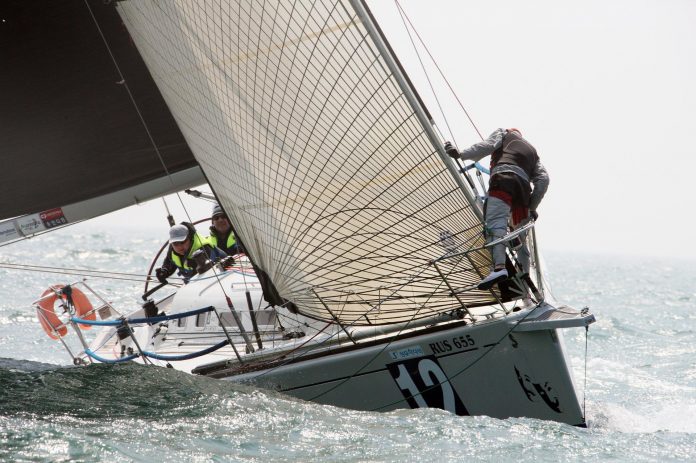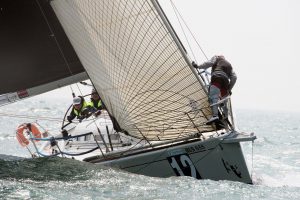


Steering fast is a combination of mechanical skill and intuition. Being a fast helmsperson is something sailors acquire by spending a large amount of time on the water both practicing and racing.
Common traits of a good helmsperson are intense focus and heightened senses. Added to these, they also need clear visibility and be able to accept input on their performance.
Understanding changing tactical options is also a prerequisite for being successful.
Correct Posture
On a boat with a wheel, stand facing forward, preferably with both hands on the wheel.
Standing gives you more visibility, sitting limits visibility and means your head is turned which can cause soreness and result in fatigue.
When you are standing, your feet and hands are touching something, which means that your whole body acts as a sensor. Always steer from the windward side where you have better visibility and can feel the elements better.
With a tiller, keep your arms and legs parallel with the tiller or tiller extension being an extension of your arm.
An exception to being to windward is in light air where it might be helpful to sit to leeward to assist with the necessary heel of the boat.
Getting in the Groove
The optimal sailing angle to windward is dependent on wind strength and sea conditions. In a chop, you would not sail as high as you would in flat water.
The average sailor sails their boat too high and too slow. There is a fine line between being in or out of the groove. This often happens when you are nervous or anxious. The best strategy here is to put the bow down a few degrees and sail for speed.
To get in the groove, set your sails for the fastest shape in the conditions. Observe your performance against your competitors. Next, balance your helm by adjusting the sails and your crew weight.
If your boat is set up well, ideally you will feel a slight pull to windward. Once the boat feels right, start experimenting but only make one change at a time to learn what works.
Steering References
There are plenty of references to use when steering and you need to keep each in mind simultaneously.
- The heel angle – compare this to the horizon and this tells you the force from the wind.
- Trim of the sails – over-trimmed or under-trimmed sails give an indication that you are off course or the sails need adjustment.
- Speed compared to other boats – this will show whether your steering and setup are correct for the conditions.
- Water colour – look for darker patches of water which will indicate more breeze.
- Masthead wind indicator – keep an eye on this as the wind changes at the masthead before it changes at deck level.
- Sailing Instruments – Boat speed, if your class allows it. The goal is to maintain a steady speed by adjusting the course and sail settings. Apparent wind angle, If the wind shifts and the apparent wind angle remains the same, you’ll be sailing on a new course. Wind Direction, by monitoring your speed, sail trim and compass course it’s easy to detect changes in wind direction.
- Turns of the wheel or angle of the tiller – this indicates how much pressure is being exerted by the sails.
- Flags, smoke and other land references – use every source available to read the wind.
- Telltales on the shrouds – use these to establish the apparent wind angle.
- Compass – use the compass to give you a steady reference to keep track of your course. On a multi-crewed boat, a crew member should be allocated this job. The helmsperson should instruct that person on how they would like the information to be related and how often.
SAILING TO WIN Book plus BONUSES

